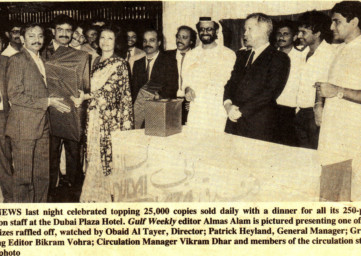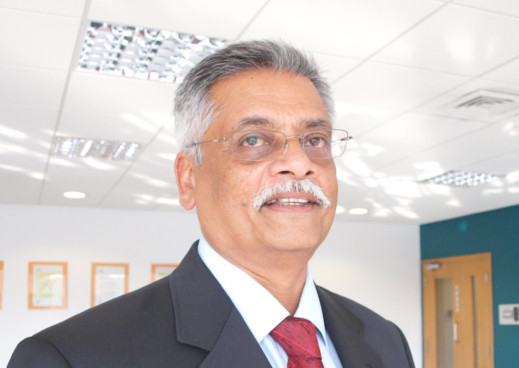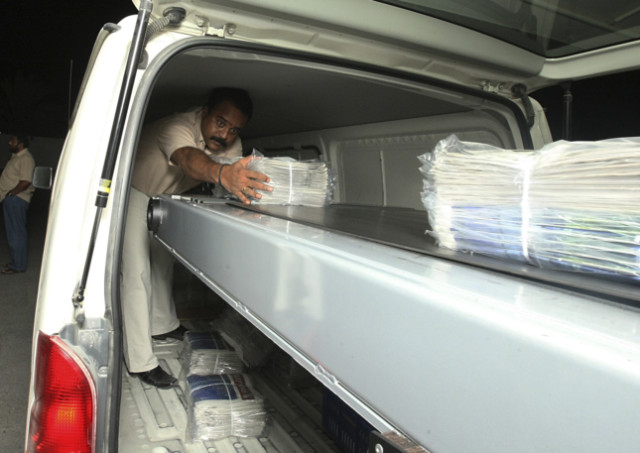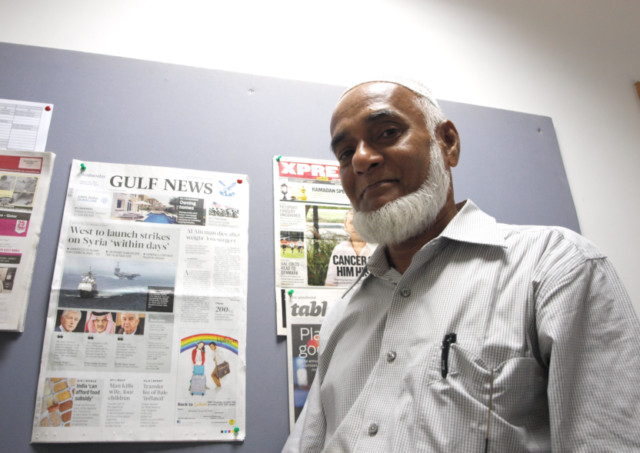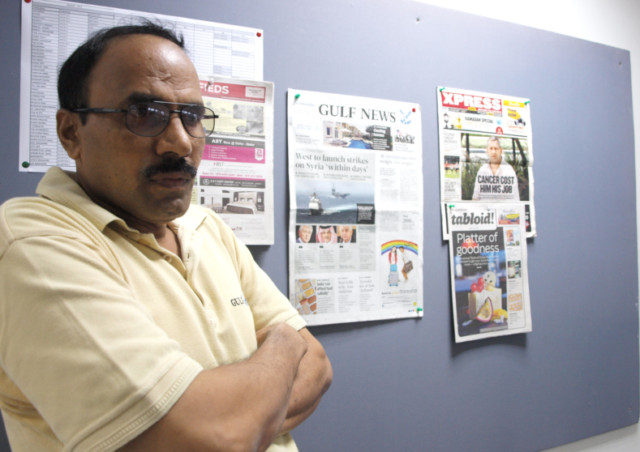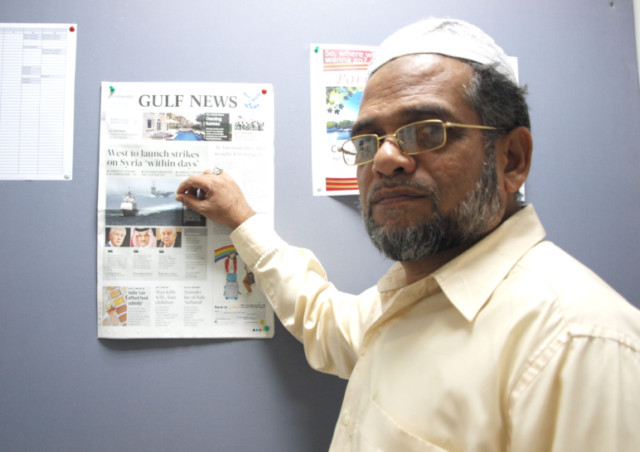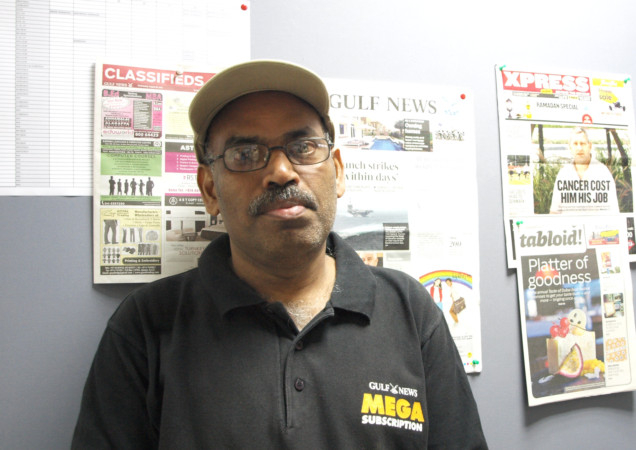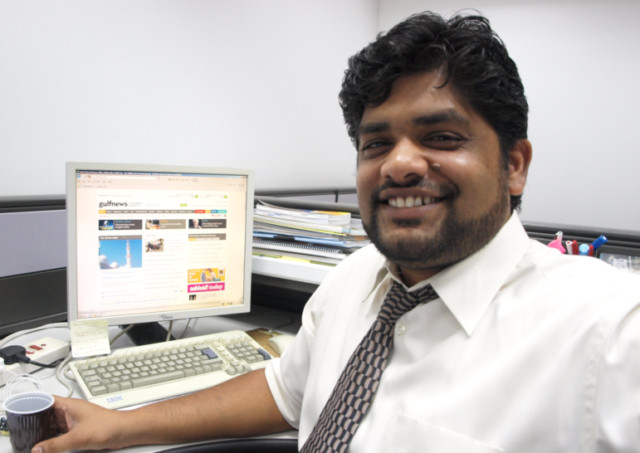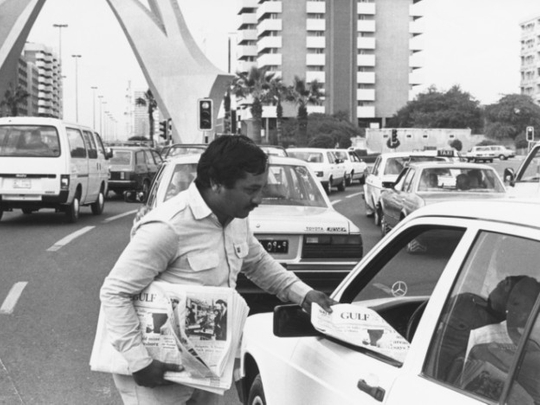
A question to the circulation and distribution team at Gulf News about its history reveals that newsboys are keen news sensors. Their memories serve as the accurate determinants of the most successful subscription campaigns. They remember the weeks when circulation jumped up due to local or international events. And equally, they have accurate memory logs for successful promotions involving freebies such as digital diaries and hotel vouchers.
“I remember in the early 1980s, there was a criminal case involving the staff of a bakery in Ras Al Khaimah. We had a circulation of 5,000 copies then. But the week when the verdict was due, we printed and sold 10,000 to 15,000 copies,” says Thomas Philip, then circulation supervisor and now account group manager at Al Nisr Distribution.
Members of the distribution teams all have similar stories of the time when newsboys would sell copies of the newspaper at traffic lights at busy intersections. They did the job Google Analytics does now, functioning as accurate barometers of public interest in a story. “We have many channels for distribution, including retail and subscription. If there is a breaking story and we feel that there will be a significant pick up in demand, we print more copies. Branch managers located in various areas would take that call if they felt there would be sufficient demand,” says distribution manager Thomas Mathew, today in charge of the 825-strong distribution team spread across the UAE, including 696 newsboys.
Such fluctuating demand was particularly true of the time before the spread of television and internet news, — as recently as September 11, 2001.
“The first plane crashed in the afternoon. We usually decide the numbers for the next day by 12.30pm. That day, at the last minute we increased the number from approximately 10,000 to 12,000,” says Mathew.
Newsboys or distributors as they are called, Koolipulakkal Aboobacker, Muthukoya, Jahangir Alam and K. P. Mohammad Ali have all been with Gulf News since 1982 and remember key events that caused sales to go up.
“During the war in 1990-91, people counted on us for news. We had three editions in one day — the morning, evening and night. People used to wait for the paper,” says Aboobacker.
“When Kuwait was invaded, coalition forces at one time used one of the bases in the UAE as the staging area. During the first four days of the war, we raised volumes by 35 per cent from 11,000 to about 15,000 only in Abu Dhabi. We did not have mobile phones so in some cases we would reach one of the newsboys at his house and he would then contact the rest to come and sell copies at roundabouts,” says Bala Krishnan, then branch manager at Abu Dhabi and now the circulation sales manager.
Distributor K. P. Mohammad Ali remembers the time when former Indian prime minister Rajiv Gandhi was assassinated in 1991 and when Diana, Princess of Wales, died in 1997. “We printed special editions,” he says.
Press dispatch foreman Mohammad Iqbal, who has been with Gulf News for 35 years, recalls the first time special editions were published.
“When Indian prime minister Indira Gandhi was shot dead in 1984, we sold 5,000 copies in under an hour at traffic signals or on the streets. That is when the system of supplements started,” he says.
Professional milestones
Paper boys have played a huge role in racking up Gulf News’ current distribution numbers of 108,750, the largest for a newspaper in the region. Gathering at designated areas in various localities of the UAE before the sun goes up, they not only collect copies for distribution but also subscription renewals during the day. The months from September to December, when the department rolls out promotions for the year, are the most busy for the team.
“Many older subscribers get ready to renew their subscriptions when they see me. After so many years, we know each other,” says Alam, based in Deira. Muthukoya, on the other hand, is known simply as the man from Gulf News in the Gold Souq area of Deira.
Taking the paper from a mere 5,000 copies to its current numbers could not have been an easy feat. The first victory that everyone in distribution remembers is the relaunch in 1985. Whether newsboys or supervisors, they all have fond memories of working magic under the leadership of then general manager Patrick Heyland.
Philip says, “In three months, we distributed 70,000 copies free to build the habit of reading Gulf News. There were raffles, prizes and vouchers. During one of those times, our target was 15,000 subscriptions in 45 days and we managed to get that number in about 20-25 days. I barely saw my children at home. We would be at the office for long hours before turning up in the field,” he says.
Many methods have changed in the way Gulf News is distributed today. For one, local regulations no longer allow the sale of newspapers on street corners. Secondly, the state-of-the-art new press and packaging machines have made things more seamless.
Alam remembers a time when everyone needed to come to the press to manually insert any additional materials. Now, all of this is done automatically. Group circulation manager, Sanjay Malik, says, “For us, getting the paper to subscribers early in the morning used to be a challenge. Now, the final copies are ready as early as 2am. Earlier, each new subscription had to be manually added to the tally, added to that newsboy’s quota and loaded to the correct van. Now we enter it in a machine, it gets added to the total and assigned to the lot on the computer. There is a process for printing out the right number of copies along with the address label, channel for distribution and the name of the newsboy. There is no need for manual intervention.”
Starting with early editions at 10pm, the entire paper is ready for distribution by 1.30am. “In fact,” says Mathew, “we deliberately delay delivery because copies left at the doorstep may be stolen — we have had complaints about it. Our effort is to ensure that the last paper across the UAE is at the subscriber’s doorstep by 6am.”



